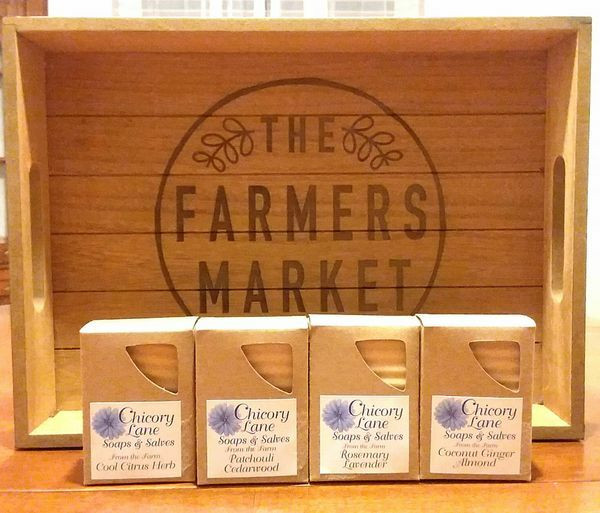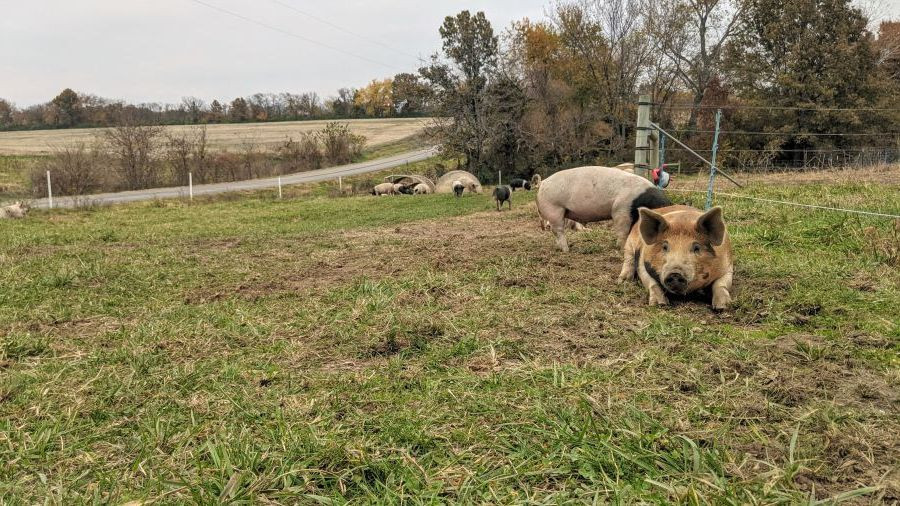Meet: Chicory Lane Soaps & Salves
posted on
March 17, 2023
Hey guys! Kaitlyn here 🙂
I'm sure you've noticed by now that David's Pasture isn't just us. And by us, I mean the Kesten/Cox/Pratt team. We're also comprised of other small farms and businesses with like-minded values such as the farms that produce our eggs, wheat, beef, etc.
We've realized that we can't do everything on our own, so why not work together?!
Anyhoo. Have you ever wondered what the heck Chicory Lane is and where it came from? What its business values are? Or who's the face behind the soap-making?
Well.....It's me 😁

I started Chicory Lane Soaps and Salves when I was 16.
I've always been a bit of an entrepreneur since I was a kid. I've also always had a bit of the pioneer spirit. I enjoyed trying things the old way and making things from scratch.
One year for Christmas, I received a soap-making kit. It was a blast and I loved it. I got to melt the base down, add my scent and petals, and mold it all cute.
But I just kept thinking, this isn't really soap making; there's got to be a way that I can make this from scratch.
To research I went. I ended up landing at the library. Our small town library had just the book I needed, The Soap Maker's Companion. I read that thing, renewed it, and read it some more until I finally bought my own copy.
It started from the very beginning. Answered so many questions like what is soap? What is lye?
(I explain lye and soap in this post and herbal salves in this one!)
It even went into great detail about which oils to use and what their properties were regarding soap making.
There was even one chapter that I just glanced at because it was the heavy chemistry chapter 😂
That was definitely one thing I learned; soap-making is a beautiful mixture of science and art. I fell in love.
I ordered all my supplies and was so anxious to make my first batch.
My first batch turned out great! I was so pleased. I took it to a local craft fair.

Not all of my soaps turned out as great as the first batch. But I was learning and experimenting. I loved getting to turn this into a little business.
You're probably wondering where the salve part comes in.
About a year before I started my soap journey, I fell in love with herbalism. I enjoy how herbs are a gift to be used to aid our bodies in healing.
Of course, I wanted to include herbs in my products!

This was the time I was able to meet my favorite herbalist, Rosemary Gladstar at the Mother Earth News Fair in 2017. Also the first time I met Remi's dad!
As I went along, I started including more products such as lip balms, herbal creams, and lotion bars.
Each year my products and packaging would change. I kept asking myself how can I make my products healthier, and how is my packaging affecting the environment?
In 2019, the first time I met Remi at the farm, he gave me a jar of lard to make soap with.
I was so excited. Lard harvested from a sustainably raised animal? This is perfect!
I went home, came up with a recipe, and gave it a try!

I enjoyed working with the lard, but it wasn't quite creamy enough. Did some research and found that tallow can be a nice addition. And who had tallow? Mr. Remi 🙂
So the next time we visited the farm, I got me some tallow!
Another experimental bar. Of course, this time I gave Remi a bar to try 😉
I then added this recipe to my collection.

Once Remi and I got to know each other more, I started selling soaps to DP. I made soaps and lip balms for the farm throughout the season I was working there.
Of course, you know how the story ends. Remi and I got married and we live happily ever after 😍
I now sell my soap and salves exclusively through David's Pasture.
It's been a busy season lately, but I'm hoping to get back into the swing of things; restocking soaps and salves, and adding new scents!
Chicory Lane is small, and more of a hobby for me right now, but its values are still the same.
I desire to provide body care products that are wholesome and nourishing to the skin.
I strive to use packaging that is not harmful to the earth!
I enjoy incorporating herbs into my products to help our bodies along the healing journey.
Thank you for following along with my soap story 💗
Feel free to reach out with any soap questions!
Your soapster,
Kaitlyn Kesten

P.S. All of my soaps are now made with pasture-raised lard and/or tallow. Order yours here!



